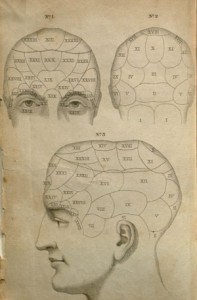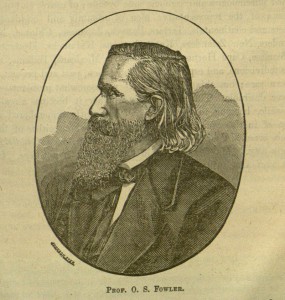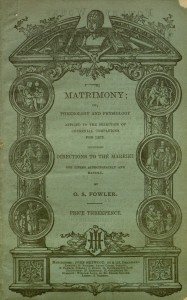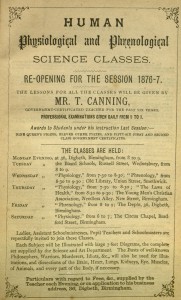Locate study spaces in the MU Libraries (Ellis and the branch libraries)
Locate study spaces on campus and in Columbia:
Your source for what's new at Mizzou Libraries
Locate study spaces in the MU Libraries (Ellis and the branch libraries)
Locate study spaces on campus and in Columbia:
Make sure your theses, dissertation and research publications are correctly attributed to you. How? Sign up for an ORCID (Open Researcher and Contributor ID) number. ORCIDs are a relatively new international effort to provide author and contributor disambiguation across many databases and tools. Universities, libraries, publishers and researchers are partners in this effort.
You can learn more about ORCIDs on the ORCID website (http://support.orcid.org/knowledgebase/topics/19379-frequently-asked-questions) or from your subject librarian (http://library.missouri.edu/contactus/#_contacts_).
Sign up for an ORCID today: http://orcid.org
Did you know there's a book sale every day in Digiprint in Ellis Library, 1st floor north?
The MU Libraries receive donations of books from people in the community. Some donations, we keep, but others may be duplicated in our collections or just do not fit the kind of books we collect. These books are added to our ongoing book sale. New books are added to the sale every 2 weeks. Books remaining on the sale shelves from previous weeks get bumped down to a lower price. Here you can find anything from fiction to local history.
The sale of these books benefits the MU Libraries Staff Association (MULSA). MULSA sponsors an annual picnic and other events for MU Libraries employees, maintains our staff room supplies, recognizes important life events of our employees, sends our staff cards when they are hospitalized, donates to local charities on behalf of its members, and more.
Want to get involved? Make new friends? Gain valuable leadership skills? And most importantly, do you want to make a difference?! The MU Libraries are looking for enthusiastic, energetic and dedicated undergraduate students who would like to serve as Ruth E. Ridenhour MU Libraries Student Ambassadors. Ambassadors will teach fellow students about the libraries, represent the libraries at alumni events and advise the libraries on marketing services to students. Don't miss out on this great opportunity. Sign up today at http://library.missouri.edu/about/studentambassadors/.
For more information, contact Shannon Cary at carysn@missouri.edu or 573-882-4703.
If finals week has you stressed, take a study break in the Ellis Library Comic Book Lounge. Read comics from the library’s collections, relax, and contribute to our comic storyboard about finals week. The Comic Book Lounge will be open all day in the Ellis Library Colonnade on Monday, May 12, and Tuesday, May 13. Vintage comics from Special Collections and Rare Books will be available for reading from 11 am to 2 pm both days.
 Phrenology is "a system of Philosophy of the human Mind; it is founded on facts, and the inductive is the only species of reasoning it admits." So states Dr. Johann Spurzheim in his outlines on the subject. Spurzheim, collaborator with Dr. Franz Joseph Gall, the founder of modern phrenology, was instrumental in bringing the science to the attention of the public in the U.K. and the United States. Today, phrenology is known as a pseudoscience that studies the relationship between a person's character and the physical properties of their skull. Phrenology can trace its roots way back to the ancient philosopher Aristotle, who wrote on the locations of the mental faculties. Around the 1800s, Gall was the first to posit a direct link between the formation of the skull and the character of the owner, calling his theory crainiology. Spurzheim was the one who popularized the term phrenology. Other power players of the field in the 19th century include the Combe brothers and the Fowler brothers, all of whom wrote extensively on the subject.
Phrenology is "a system of Philosophy of the human Mind; it is founded on facts, and the inductive is the only species of reasoning it admits." So states Dr. Johann Spurzheim in his outlines on the subject. Spurzheim, collaborator with Dr. Franz Joseph Gall, the founder of modern phrenology, was instrumental in bringing the science to the attention of the public in the U.K. and the United States. Today, phrenology is known as a pseudoscience that studies the relationship between a person's character and the physical properties of their skull. Phrenology can trace its roots way back to the ancient philosopher Aristotle, who wrote on the locations of the mental faculties. Around the 1800s, Gall was the first to posit a direct link between the formation of the skull and the character of the owner, calling his theory crainiology. Spurzheim was the one who popularized the term phrenology. Other power players of the field in the 19th century include the Combe brothers and the Fowler brothers, all of whom wrote extensively on the subject.
 Phrenology looked at the development of the skull in relation to the development of certain faculties or temperaments in the person it belonged to. An example would be the faculty of Parental Love, or "Philoprogenitiveness," which is the faculty that people demonstrate in their love of children. One could discern the prominence of such a person's love of children by observing the back of the head. According to Spurzheim and illustrated in a book by O.S. Fowler, "When this organ is large … it gives a drooping appearance to the hind part of the head."
Phrenology looked at the development of the skull in relation to the development of certain faculties or temperaments in the person it belonged to. An example would be the faculty of Parental Love, or "Philoprogenitiveness," which is the faculty that people demonstrate in their love of children. One could discern the prominence of such a person's love of children by observing the back of the head. According to Spurzheim and illustrated in a book by O.S. Fowler, "When this organ is large … it gives a drooping appearance to the hind part of the head."
This new science rapidly gained popularity in the early 19th century, inspiring phrenology parlors where you could have your head read for a fee. Unfortunately, many of these gained a bad reputation for being scam parlors set to cheat people out of their money, and this bad reputation still tinges thoughts of phrenology today. Also stemming from the popularity of phrenology during this time were galleries where people could go to see casts, molds, and busts that illustrated each of the faculties and served to educate the general public. A renowned phrenologist and maker of the "phrenology heads" that have become iconic of the science today was Frederick Bridges, who had such a gallery in Leeds. Visitors could walk the gallery (using helpful catalogues such as this one) and see such things as a cast from the head of Lord Byron in which, "Ideality is very large. Wit, and Language, are also large" next to a cast of Shakespeare's head with "Imitation, Ideality, Benevolence, Individuality and Language large."
 Some of the more practical applications of phrenology in the 1800s included using it to defend and/or treat convicted criminals and also to determine the compatibility of two people in a marriage. In his writing on phrenology and matrimony, Fowler imparts this wisdom upon his unmarried readers, "in the name of nature and of nature's God, marry congenial spirits or none- congenial not in one or two material points, but in all the leading elements of character […] marry one whose Temperament and Phrenological developments are similar to your own! Do this, and you are safe, you are happy: fail to do this, and you marry sorrow and regret."
Some of the more practical applications of phrenology in the 1800s included using it to defend and/or treat convicted criminals and also to determine the compatibility of two people in a marriage. In his writing on phrenology and matrimony, Fowler imparts this wisdom upon his unmarried readers, "in the name of nature and of nature's God, marry congenial spirits or none- congenial not in one or two material points, but in all the leading elements of character […] marry one whose Temperament and Phrenological developments are similar to your own! Do this, and you are safe, you are happy: fail to do this, and you marry sorrow and regret."
As phrenology's popularity grew, and also likely owing in part to the many scam phrenology parlors, there were some who became skeptical about this practice, likening phrenology to a form of mysticism. In his reply to an article published by a Dr. Ashburner about phrenology, mesmerism, and clairvoyance, George Corfe asks, "What parent would deliberately wish to educate a child to become a disciple in such antichristian and immoral principles?"
Outsiders weren't the only ones with criticism for phrenologists. As with any scientific field, phrenologists would write about the work of their contemporaries, as seen in this pamphlet where the author, George Combe, criticizes another work he has read, eloquently calling its author out on several important points and stating that "This is the second time that Mr. Stone has charged 'dishonesty' against Phrenologists, founded solely on gross mistakes of his own," here also referencing a previous article criticizing phrenological practices.
 Phrenology experienced a sort of revival in the early 20th century when scientists began to apply it to other areas of study, such as anthropology, psychology, and pedagogy. On the negative side, the Nazis and other fascist ideologies have historically misapplied the principles of sciences like phrenology and eugenics to advance their own ways of thinking. Though not nearly as popular today, studiers of this science remain, active in the pursuit of knowledge and the quest to fulfill the charge of the age-old adage to "Know Thyself." To learn more about this fascinating branch of science (and maybe more about yourself in the process!), check out the links below and stop in to see us here at Special Collections.
Phrenology experienced a sort of revival in the early 20th century when scientists began to apply it to other areas of study, such as anthropology, psychology, and pedagogy. On the negative side, the Nazis and other fascist ideologies have historically misapplied the principles of sciences like phrenology and eugenics to advance their own ways of thinking. Though not nearly as popular today, studiers of this science remain, active in the pursuit of knowledge and the quest to fulfill the charge of the age-old adage to "Know Thyself." To learn more about this fascinating branch of science (and maybe more about yourself in the process!), check out the links below and stop in to see us here at Special Collections.
All print sources come from our collection. See links to catalog records in post above for more information.
Online Sources Used:
"Phrenology in the 20th Century." The History of Phrenology. N.p., n.d. Web. 18 Mar. 2014. <http://www.phrenology.org/intro20.html>.
The scanners are working again. Please carefully read and follow directions on the scanners to keep them working properly. Thanks for your cooperation.
Story Contact: Shannon Cary, carysn@missouri.edu, 573-882-4703
COLUMBIA, Mo. – Ann Campion Riley, associate director for access, collections and technical services at the University of Missouri, has been elected vice-president/president-elect of the Association of College and Research Libraries (ACRL), a division of the American Library Association (ALA) for academic librarians that has more than 12,000 members. Riley will become president-elect following the 2014 ALA annual conference in Las Vegas and will assume presidency of the association in July 2015 for a one-year term.
“I am thrilled to have the opportunity of leading ACRL,” Riley said. “The inspiring experience of working with a future-oriented board of directors will be wonderful. Active ACRL members are all hard-workers and bring great spirits of inquiry to the organization. ACRL's current initiatives, such as promoting the value of libraries work and studying the role of research data curation in libraries, are continuing challenges. Looking for the next set of challenges won't take long as ACRL looks forward and works to engage and serve new and current members.”
“ACRL is delighted to have Ann Campion Riley join the Board as vice-president/president-elect,” said ACRL Executive Director Mary Ellen K. Davis. “Ann was a director-at-large on the ACRL Board from 2009-2013 and has a long history of service to ACRL. Her knowledge of ACRL, academic librarianship and the broader higher education environment, along with her leadership in both ACRL and other organizations, will be an asset to the board as it continues to work with members to meet their needs and to advance the plan for excellence.”
Riley’s work with state and regional associations includes serving on the Great Western Library Alliance (GWLA) Collection Development Committee (2009-present), Great Plains Network (GPN) and GWLA Advisory Council on the Management of the Lifecycle of Research Data Project (2012-present), GWLA Digital Collections Committee (2007-2010), Missouri Library Association (MLA) Awards Committee chair (2007-2009), as MLA president (2005) and as president of the Missouri Association of College and Research Libraries (2003).
Riley’s awards include being honored as a Research Library Leadership Fellow by the Association of Research Libraries (2011–2012), and as a Global Scholar by the University of Missouri (2010). She has been awarded the “You Make a Difference Award” by Saint Louis Community College (2004). She also has been honored with participation in Leadership Chesterfield (2001), LEADERS 1999, National Institute of Leadership Development and Beta Phi Mu, and international library and information studies honor society.
Her publications and presentations include “The Community of Libraries” column in MOinfo: Newsletter of the Missouri Library Association (2005); coauthor of “Caution! Hazardous Substances: Recognizing and Deflecting Toxic Personalities in the Workplace,” presented at the ACRL National Conference in Baltimore (2007); and coauthor of “Using Staff Focus Groups to Help in Services Assessment” published in the Proceedings of the North Central Association Annual Meeting (2001).
Riley earned a Bachelor of Arts and a Master of Science in Library Science from the University of Illinois at Urbana-Champaign and a Master of Arts in English from the University of Missouri-St. Louis.
ACRL is the higher education association for librarians. Representing more than 11,500 academic and research librarians and interested individuals, ACRL is the only individual membership organization in North America that develops programs, products and services to help academic and research librarians learn, innovate and lead within the academic community.
One of the great things about Ellis Library, apart from the fact that it's the largest research library in the state, is that it's surrounded by beautiful flowering trees courtesy of the Mizzou Botanic Garden. This week we're featuring the weeping crabapples next to the north entrance of Ellis Library, the redbuds in the lawn in front of the State Historical Society, and the dogwoods across from the northwest corner (just adjacent to that bed of tulips I wrote about last week).*
Two of the featured trees this week are native to Missouri. Cornus florida, or flowering dogwood, and Cercis canadensis, or Eastern redbud, grow wild throughout the eastern United States. The dogwood is also our Missouri state tree. Crabapples are members of the genus Malus, along with their cousins the domestic apple; various species are native to North America and Europe. While the fruit is edible, its bitter taste and woody texture mean you probably wouldn't want to eat it.
The illustrations featured here are by Mary Vaux Walcott, an artist who specialized in botanical illustration. In 1925, the Smithsonian published reproductions of her watercolors of American plants in five portfolios entitled North American Wild Flowers. Our copy was originally part of the government documents collection and is now in the closed shelf collection. Of the dogwood, Walcott writes,
Dogwood grows abundantly in the favored regions which it inhabits. When the tree is in bloom in early spring, the profuse blossoms appear like a crowd of great snowflakes falling through the interlaced branches.
*While the photos of the redbuds and dogwoods are from this week, I'll admit it: the photos of the flowering crabapples were taken over a week ago. Some years, the flowers don't last long.
Collaboration is easier than ever with the library’s new mobile whiteboards!